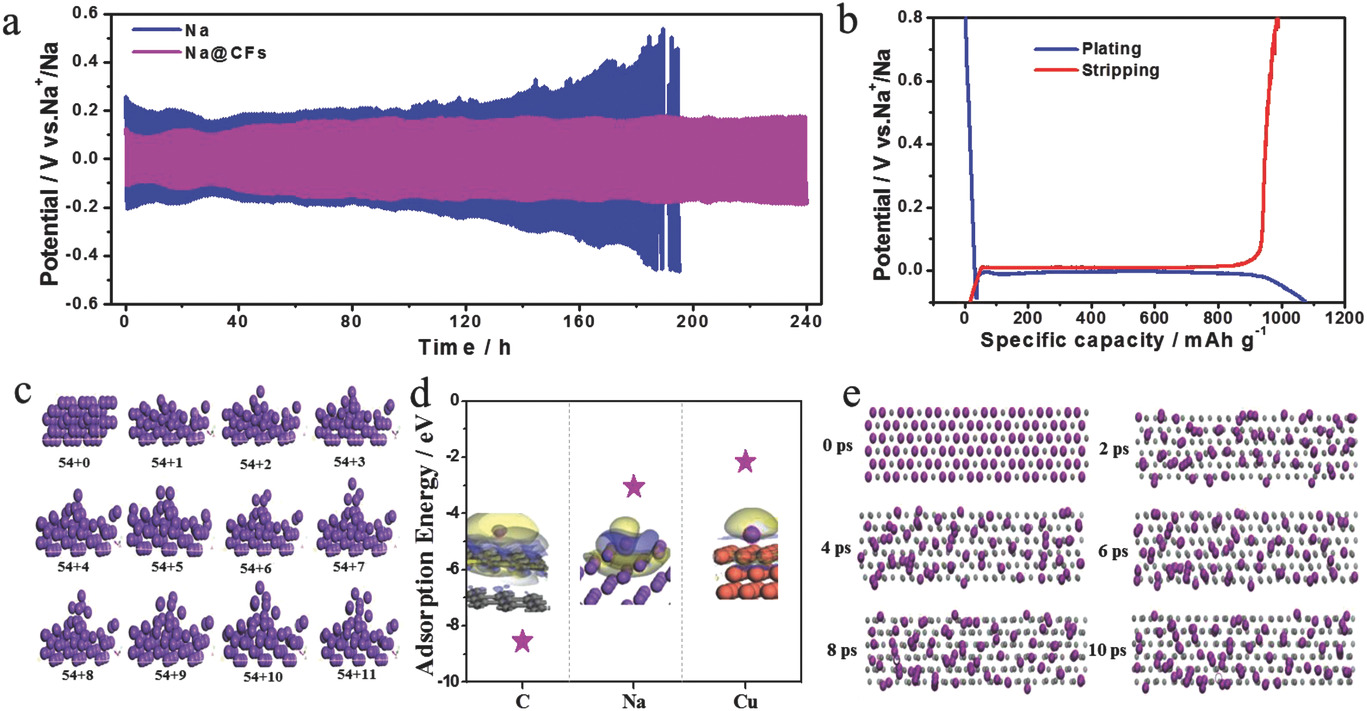Stimuli-responsive energy storage devices have emerged for the fast-growing popularity of intelligent electronics. However, all previously reported stimuli-responsive energy storage devices have rather low energy densities (<250 Wh kg-1) and single stimuli-response, which seriously limit their application scopes in intelligent electronics. Herein, a dual-stimuli-responsive sodium-bromine (Na//Br2) battery featuring ultrahigh energy density, electrochromic effect, and fast thermal response is demonstrated. Remarkably, the fabricated Na//Br2 battery exhibits a large operating voltage of 3.3 V and an energy density up to 760 Wh kg−1, which outperforms those for the state-of-the-art stimuli-responsive electrochemical energy storage devices. This work offers a promising approach for designing multi-stimuli-responsive and high-energy rechargeable batteries without sacrificing the electrochemical performance.

Stimuli-responsive energy storage devices have emerged for the fast-growing popularity of intelligent electronics. However, all previously reported stimuli-responsive energy storage devices have rather low energy densities (<250 Wh kg-1) and single stimuli-response, which seriously limit their application scopes in intelligent electronics. Herein, a dual-stimuli-responsive sodium-bromine (Na//Br2) battery featuring ultrahigh energy density, electrochromic effect, and fast thermal response is demonstrated. Remarkably, the fabricated Na//Br2 battery exhibits a large operating voltage of 3.3 V and an energy density up to 760 Wh kg−1, which outperforms those for the state-of-the-art stimuli-responsive electrochemical energy storage devices. This work offers a promising approach for designing multi-stimuli-responsive and high-energy rechargeable batteries without sacrificing the electrochemical performance.
